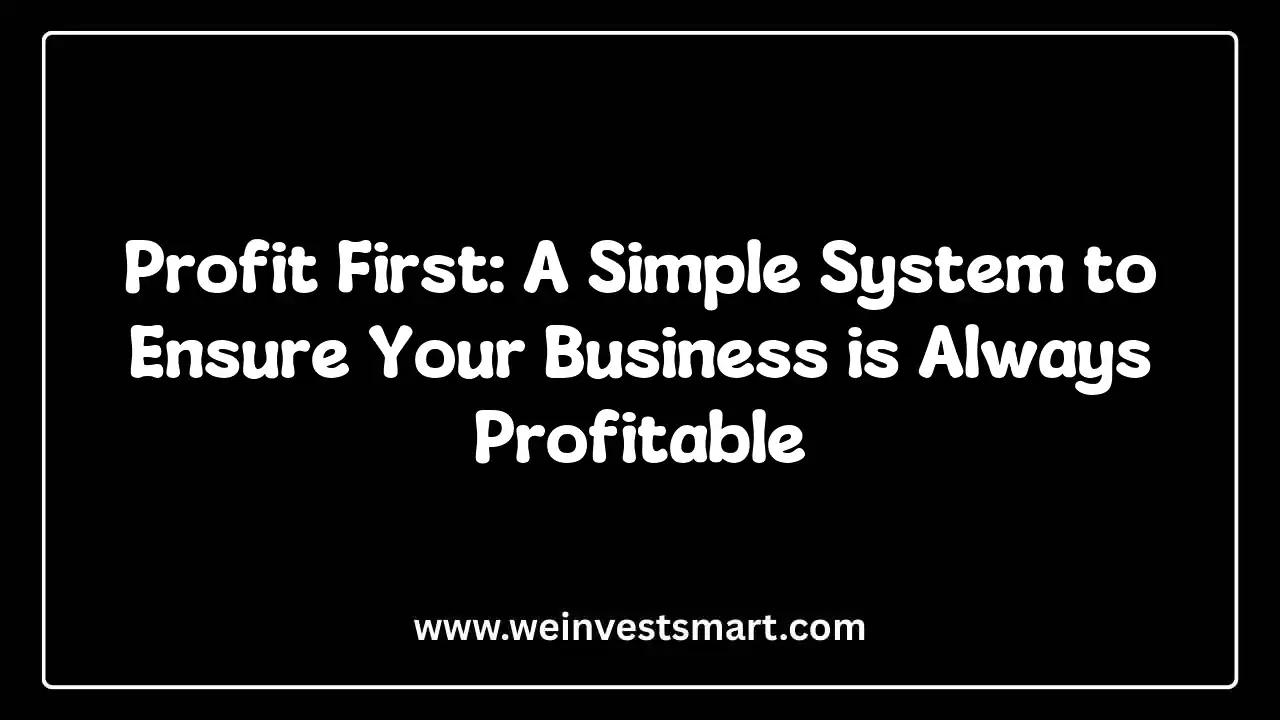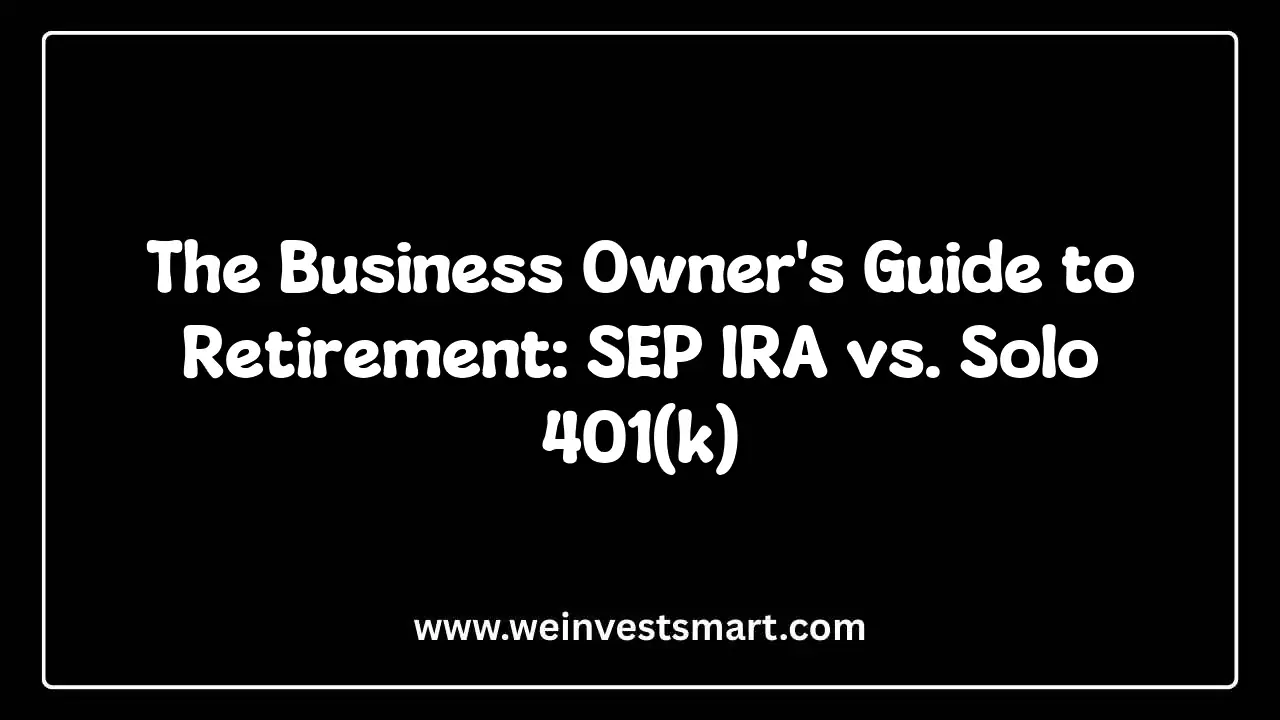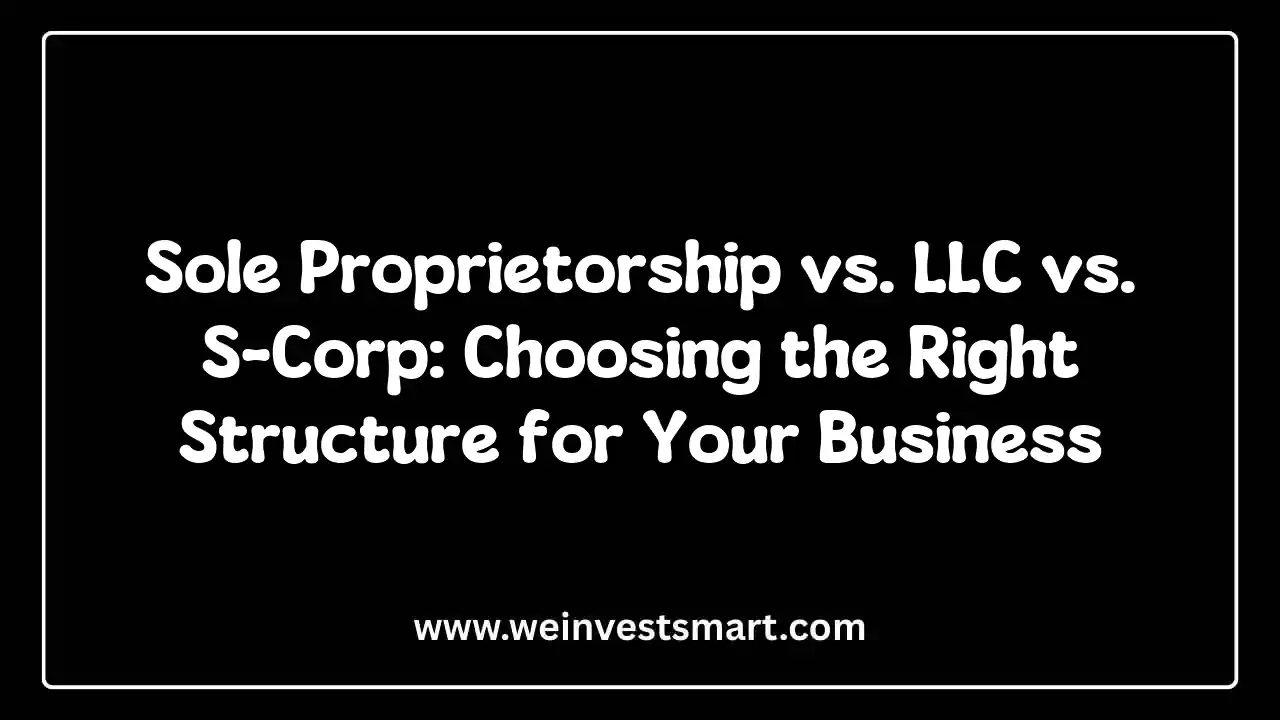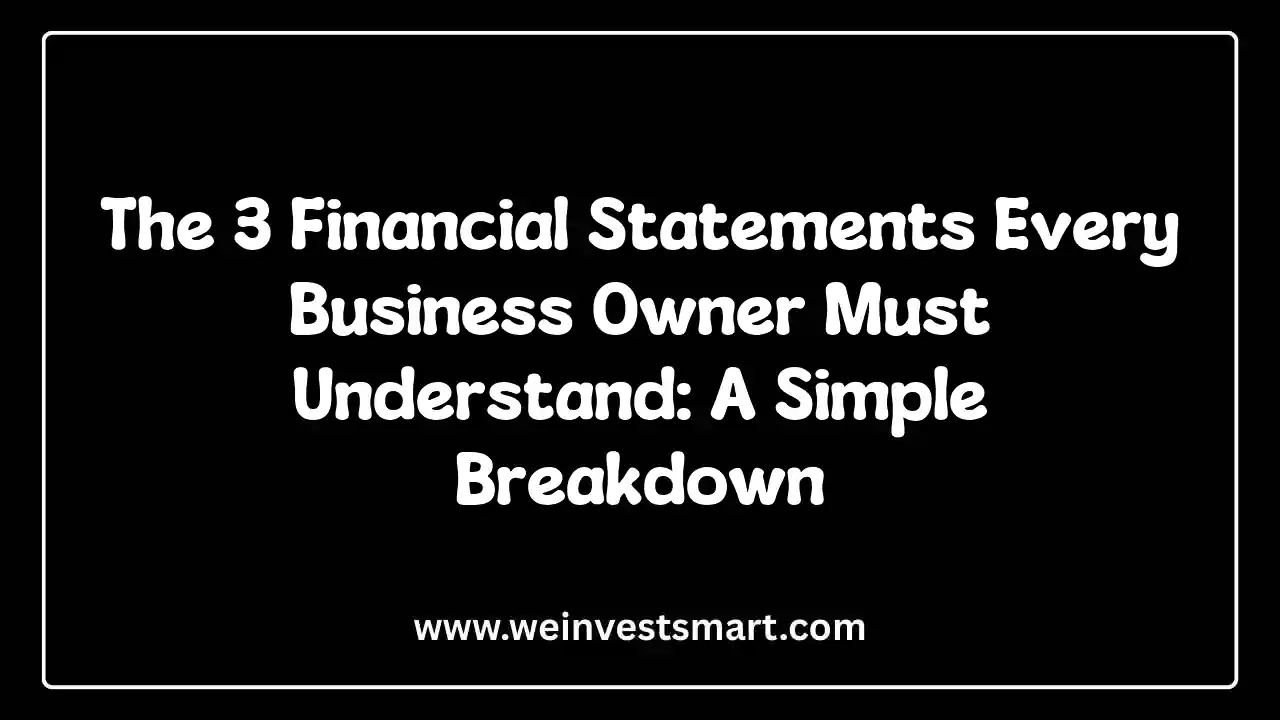· WeInvestSmart Team · business-finance · 11 min read
Beyond the 9-to-5: 10 Unique Business Ideas You Can Start Today with Low Investment
Stop believing you need a mountain of cash to start a business. This guide unpacks 10 unique, low-investment business ideas and provides a practical blueprint for turning your skills into a profitable venture.
Most people are trapped in a financial narrative they didn’t write. The story goes like this: to build wealth or start a business, you need a mountain of capital, a revolutionary invention, or an MBA from a top university. But here’s the uncomfortable truth: that story is a lie. It’s a convenient excuse that keeps you from taking control of your financial destiny. Going straight to the point, the biggest barrier to starting a business isn’t a lack of money; it’s a lack of imagination and the willingness to monetize the skills you already have.
We’ve all been there, scrolling through articles about “successful entrepreneurs” who started with a “small” loan of $50,000 from their parents. That advice feels utterly disconnected from reality for most of us. It makes entrepreneurship seem like an exclusive club with a high cost of entry. The idea of launching a venture while juggling a 9-to-5, family, and a tight budget feels like a fantasy.
But what if we told you that your laptop, your niche knowledge, or your knack for organizing could be the foundation of a real, profitable business? Here’s where things get interesting. The digital economy has shattered the old rules. You no longer need a factory or a storefront; your most valuable asset is your expertise. And this is just a very long way of saying that you are likely sitting on a goldmine of potential business ideas without even realizing it. This guide is your map to that goldmine.
Your Brain’s Resistance to “Small” Ideas
Before we dive into the “what,” we have to tackle the “why not.” Why do we dismiss low-investment business ideas? The problem is a cognitive bias toward complexity. Our brains are conditioned to believe that “real” businesses must be big, complicated, and expensive. A service that you can run from your kitchen table feels less legitimate than a business with a fancy office and a dozen employees.
Going straight to the point, this is an absurd standard. The funny thing is that this mindset is a trap that keeps you financially stagnant. It creates a false dichotomy: either risk everything on a massive venture or do nothing at all. This “all or nothing” thinking paralyzes you. The most successful entrepreneurs don’t start with a giant leap; they start with a single, manageable step. They validate their idea on a small scale, generate revenue, and then reinvest that revenue to grow.
This sounds like a trade-off, but it’s actually a massive strategic advantage. Starting small and lean means you have everything to gain and almost nothing to lose. You can test your market, refine your offering, and build a customer base without taking on crippling debt. We covet this low-risk approach because it replaces the terror of failure with the excitement of experimentation.
H2: The Service Alchemist: Turning Your Skills into Cash
The easiest and cheapest way to start a business is to sell a service. You are monetizing your time, knowledge, and skills—assets you already own.
1. The Professional Organizer or Declutterer
- The Core Concept: You help people bring order to their chaotic homes, offices, or digital lives. This isn’t just cleaning; it’s about creating systems for living and working more efficiently.
- Why it Works with Low Investment: Your primary tools are your brain and your time. Startup costs are minimal: a professional-looking website, business cards, and perhaps some basic supplies.
- How to Get Started:
- Niche Down: Don’t just be an “organizer.” Be the “kitchen and pantry guru,” the “closet transformation specialist,” or the “digital file wizard” for small businesses.
- Build a Portfolio: Offer to organize a space for a few friends or family members for free or at a deep discount. Take stunning before-and-after photos. This is your most powerful marketing tool.
- Create Service Packages: Instead of an hourly rate, offer packages like “The Weekend Closet Reset” for a flat fee. This makes it easier for clients to say yes.
- How to Make Money: Charge per project ($300-$1,000+) or by the hour ($50-$150). You can also earn affiliate commissions by recommending organizing products or earn a margin by purchasing and installing storage solutions for your clients.
2. The Freelance Proofreader or Editor
- The Core Concept: In the age of content, everyone is a publisher, but not everyone is a writer. You are the final quality check for bloggers, authors, students, and businesses, ensuring their work is polished and professional.
- Why it Works with Low Investment: If you have a computer and a strong grasp of grammar, you’re already in business.
- How to Get Started:
- Choose Your Specialty: Do you love academic papers, fantasy novels, or corporate blog posts? Specializing makes you an expert.
- Get a Testimonial: Offer to proofread a short piece for a local business or a student for free in exchange for a glowing testimonial for your website.
- Build a Simple Website: Your site should clearly state who you are, what services you offer, your rates, and showcase your testimonials.
- How to Make Money: Rates can be per word ($.02-$.05), per page ($5-$10), or per hour ($25-$60). Offering package deals for larger projects, like a full manuscript edit, is highly profitable.
H2: The Hyper-Local Hero: Dominating Your Neighborhood Niche
Some of the most powerful business ideas involve serving a small, geographically-defined community with a specialized service they can’t get from a large corporation.
3. The Hyper-Local Newsletter or Community Blog
- The Core Concept: You become the go-to source for what’s happening in your specific town or neighborhood. Think restaurant openings, school sports, local government news, and community events.
- Why it Works with Low Investment: Your main investment is time—attending local events, talking to people, and writing. Platforms like Substack or Beehiiv allow you to start a newsletter for free.
- How to Get Started:
- Define Your Zone: Be ruthlessly specific. Not “Springfield,” but “The Oakwood Neighborhood of Springfield.”
- Content is King: Start by consistently publishing valuable content. Interview a local shop owner. Create a “Top 5 Family-Friendly Hikes” list. Be relentlessly useful.
- Build Your Email List: Promote your newsletter in local Facebook groups, at farmers’ markets, and through partnerships with local businesses.
- How to Make Money:
- Local Advertising: Local real estate agents, restaurants, and shops will pay to reach your engaged, local audience.
- Sponsored Content: A local cafe pays you to write a feature story about them.
- Premium Subscriptions: Offer a paid tier for exclusive content, like in-depth real estate market analysis or early access to event tickets.
4. The Niche Local Tour Guide
- The Core Concept: Forget generic city bus tours. You offer unique, curated experiences based on a theme: a “haunted history” walking tour, a “best street art” photography tour, or a “craft brewery crawl.”
- Why it Works with Low Investment: You are monetizing your local knowledge. Your main cost is marketing and perhaps a business license, depending on your city.
- How to Get Started:
- Find Your Hook: What’s your unique angle? What story can you tell about your city that no one else is telling?
- Design Your Tour: Plan your route, script your stories, and do a dry run with friends.
- Get Listed: Create experiences on platforms like Airbnb Experiences or Tours By Locals to tap into an existing customer base.
- How to Make Money: Charge per person per tour ($25-$75). Partner with local businesses (a brewery, a coffee shop) for a commission on sales you bring them. Offer private, premium tours for a higher flat rate.
H2: The Curator: Building a Business Around Your Taste
If you have a great eye and a passion for a specific niche, you can build a business by curating products and experiences for others.
5. The Personalized Gift Curation Service
- The Core Concept: You create thoughtful, bespoke gift boxes for individuals and corporate clients who are too busy or uninspired to do it themselves.
- Why it Works with Low Investment: You don’t need to hold inventory. You purchase the items after a client has placed and paid for an order. Your value is in the sourcing, curation, and beautiful presentation.
- How to Get Started:
- Define Your Niche: Focus on a specific theme, like “Gifts for New Moms,” “Eco-Friendly Welcome Baskets,” or “Local Artisan Food Boxes.”
- Build Supplier Relationships: Identify local artisans and unique online shops. Negotiate a small discount for the business you bring them.
- Photograph Everything: Create 3-5 sample boxes and get professional photos taken. Your visuals are your product.
- How to Make Money: Charge a service fee on top of the cost of the goods (e.g., 20-40% markup). Offer different tiers of boxes (e.g., The “Bronze” box for $75, the “Gold” for $150). Corporate clients are especially lucrative.
6. The Niche Subscription Box
- The Core Concept: Similar to gift curation, but with a recurring revenue model. Each month, you send subscribers a box of curated items related to a specific hobby or interest.
- Why it Works with Low Investment: You can start with a “pre-launch” phase. You build a landing page, promote the idea, and only purchase products and launch the business once you have a certain number of paid subscribers.
- How to Get Started:
- Pick a Hyper-Niche: Don’t do a “snack box.” Do a “Vegan, Gluten-Free Snack Box.” Don’t do a “book box.” Do a “Vintage Sci-Fi Paperback Book Box.” Specificity wins.
- Source Your Products: Find unique items that your target audience wouldn’t easily discover on their own.
- Price for Profit: Calculate the cost of the products, box, shipping, and your time. A common model is to price the box at 2-3 times the cost of the goods.
- How to Make Money: The beauty is in the recurring revenue. If you have 100 subscribers paying $35/month, that’s $3,500 in predictable monthly income.
H2: The Digital Problem-Solver: Leveraging Tech for Profit
These ideas use technology to solve common and frustrating problems for specific audiences.
7. Tech Support for Seniors
- The Core Concept: You provide patient, friendly, in-home tech support for older adults who are overwhelmed by their smartphones, computers, and smart TVs.
- Why it Works with Low Investment: Your primary asset is your knowledge and patience. You need reliable transportation and a simple website.
- How to Get Started:
- Market Offline: This is key. Put up flyers at community centers, libraries, and places of worship. Your target market isn’t necessarily finding you on Instagram.
- Develop a “Menu”: Offer simple, flat-rate services like “New Smartphone Setup,” “Wi-Fi & Printer Troubleshooting,” or “Photo Organization Tutorial.”
- Build Trust: Get background-checked and emphasize safety and reliability in your marketing.
- How to Make Money: Charge an hourly rate ($40-$75) or sell service packages (e.g., a 3-hour block of “tech time” for a discounted rate). Offer a monthly retainer for ongoing support.
8. The Virtual Assistant (VA) for a Niche Industry
- The Core Concept: You provide remote administrative, creative, or technical assistance to busy professionals.
- Why it Works with Low Investment: You can start with a laptop and a good internet connection.
- How to Get Started:
- Specialize, Specialize, Specialize: Don’t be a generic VA. Be a “VA for Podcasters” (editing audio, writing show notes), a “VA for Therapists” (managing appointments, handling billing), or a “VA for Etsy Sellers” (writing product descriptions, managing social media).
- Define Your Service Packages: Offer tiered monthly retainers (e.g., 10 hours/month, 20 hours/month). This provides you with stable income.
- Network in Your Niche: Join Facebook groups and online forums where your ideal clients hang out. Don’t sell; just be helpful and answer questions. People will start to see you as the expert.
- How to Make Money: Monthly retainers are the gold standard ($300-$2,000+/month). You can also offer one-off project rates for things like a website setup.
H2: How to Get Started: Your First 30 Days
But what do we do once we have an idea? And here is where things get interesting. The goal is not to launch a perfect business. The goal is to get your first paying client.
- Talk to People (Days 1-10): Before you build a website or print a business card, talk to at least 10 people who fit your ideal customer profile. Ask them about their problems. Would they pay for your solution? This simple step will save you from building something nobody wants.
- Create Your Minimum Viable Offer (Days 11-20): Define the simplest version of your service you can sell. Create a one-page PDF or a simple landing page that explains what you do, who it’s for, and how much it costs.
- Go to Your “Warm” Network (Days 21-30): Reach out to friends, family, and former colleagues. Don’t ask them to buy; ask them if they know anyone who might be interested. This is often the fastest path to your first client.
The Bottom Line: Your Biggest Asset is Your Action
There are hundreds of viable business ideas that require more creativity than capital. The ones listed here are just a starting point. The real secret isn’t finding the perfect idea; it’s choosing one and taking messy, imperfect action.
But even though these ideas are simple, we must be clear: they require work, consistency, and a passion for solving someone’s problem. This isn’t a get-rich-quick scheme. It’s a get-in-control-of-your-life plan.
And this is just a very long way of saying that the permission you’re waiting for will never come. The perfect time will never arrive. The only thing standing between you and a viable business is the first step. You get the gist: pick an idea, talk to a potential customer, and start. Today.
This article is for educational purposes only and should not be considered personalized financial advice. Consider consulting with a business advisor for guidance specific to your situation.



